In the figure, PQ is parallel to BC PA: PB=2:3. AB=5centimetres,AQ=4 centimeters.
a) Find AQ: QC.
b) What is the length of QC ?
c) Find AQ: ACSolution in Malayalam
Step by step video & image solution for In the figure, PQ is parallel to BC PA: PB=2:3. AB=5centimetres,AQ=4 centimeters.a) Find AQ: QC.b) What is the length of QC ?c) Find AQ: AC by Maths experts to help you in doubts & scoring excellent marks in Class 9 exams.
Updated on:21/07/2023Topper's Solved these Questions
Similar Questions
In the picture, the square on the hypotenuse of the top most right triangle Is drawn. Calculate the area and the length of a side of the square.
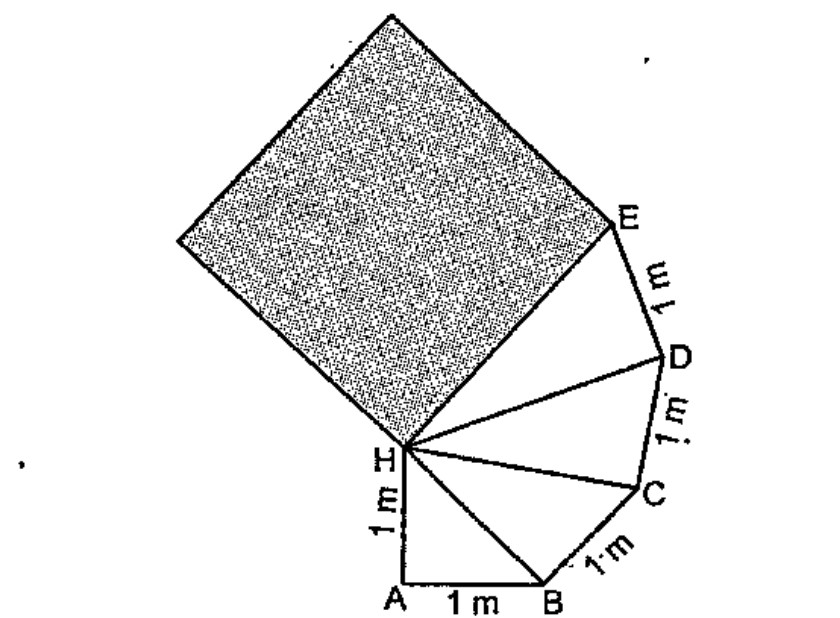 .
.
View SolutionIn rectangle with one side 1cm shorter than the other , take the length of the shorter side as x cm.
i) Taking their perimeters as p(x) cm, write the relation between p(x) and x as an equation.
ii) Taking their areas as a(x) sq.cm, write the relation between a(x) and x as an equation.
iii) Calculate p(1),p(2),p(3),p(4),p(5). Do you see any pattern?
iv) Calculate a(1),a(2),a(3),a(4),a(5).Do you see any pattern?
View SolutionIn Fig. 10.83, if AP=PB , then (FIGURE) AC=AB (b) AC=BC (c) AQ=QC (d) AB=BC
View SolutionBC के समान्तर एक रेखा, ΔABC की भुजाओ AB तथा AC को बिंदु P एवं Q पर प्रतिछेदित करती है। AP=QC, PB=4 यूनिट तथा AQ=9 यूनिट है, तब AP की लम्बाई ज्ञात करे?
View Solutionunderset("(aq)")(MnO_(4)^(-)) + underset("(aq)")(Br^(-)) to underset("(aq)")(MnO_(2))+ underset("(aq)")(BrO_(3)^(-))
View Solutionदिए गए चित्र में P और Q क्रमशः ΔABC की भुजाओं AC और AB पर इस प्रकार है कि AP=3.5cm,PB=7cm,AQ=3cm और QC=6cm। यदि PQ=4.5cm तो BC ज्ञात करें ।
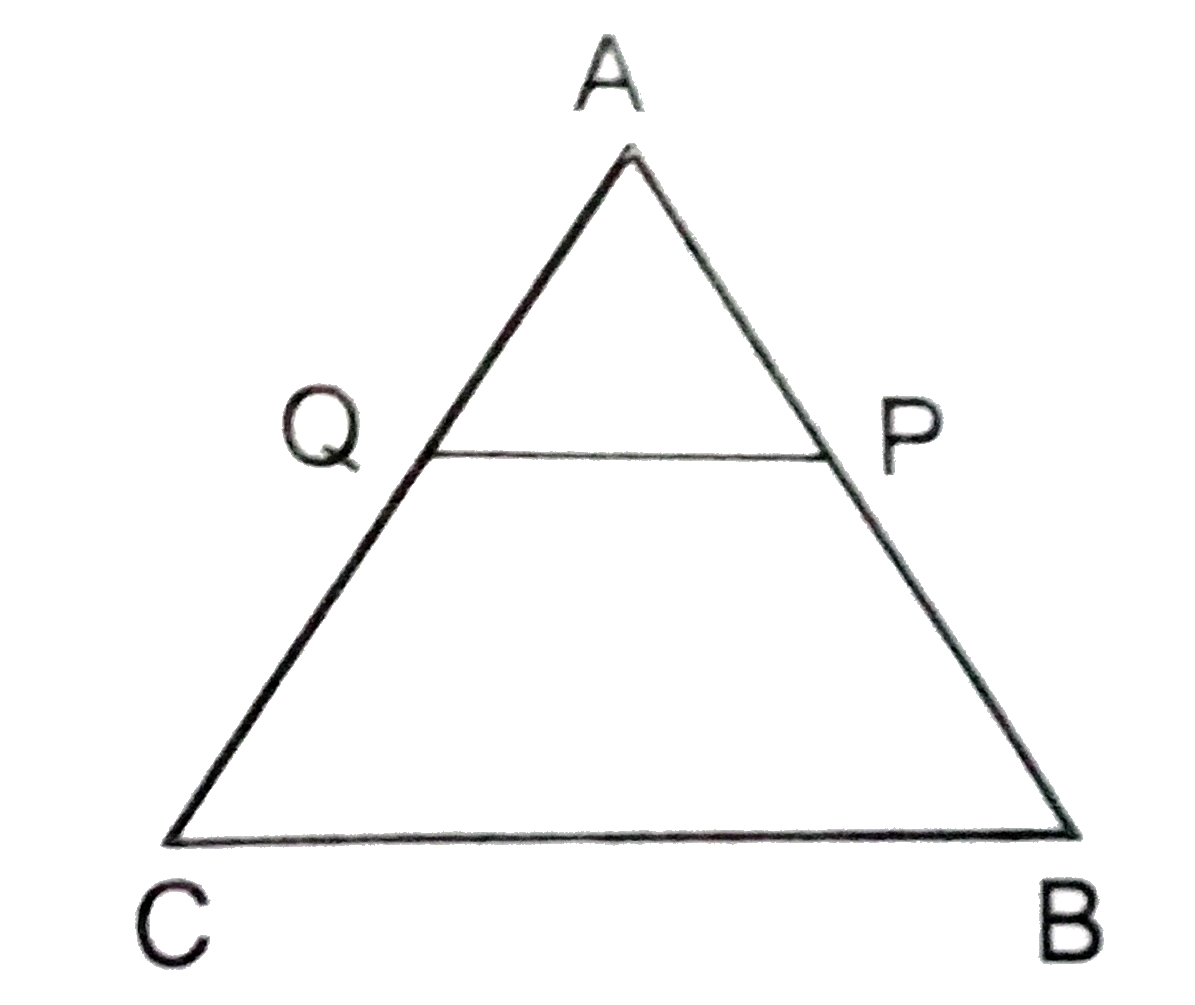
View SolutionΔABC में P और Q क्रमशः AB तथा AC पर दो बिन्दु इस प्रकार हो कि PQ∣∣BC और APPB=23 हो , तो AQQC का मान ज्ञात करें।
View SolutionIn the figure, segPQ∣∣ side BC and seg QR∣∣ side AB.
(i) Find AQQC.
(ii) What would be CRRB ?
(iii) Is BPPA=BRRC?
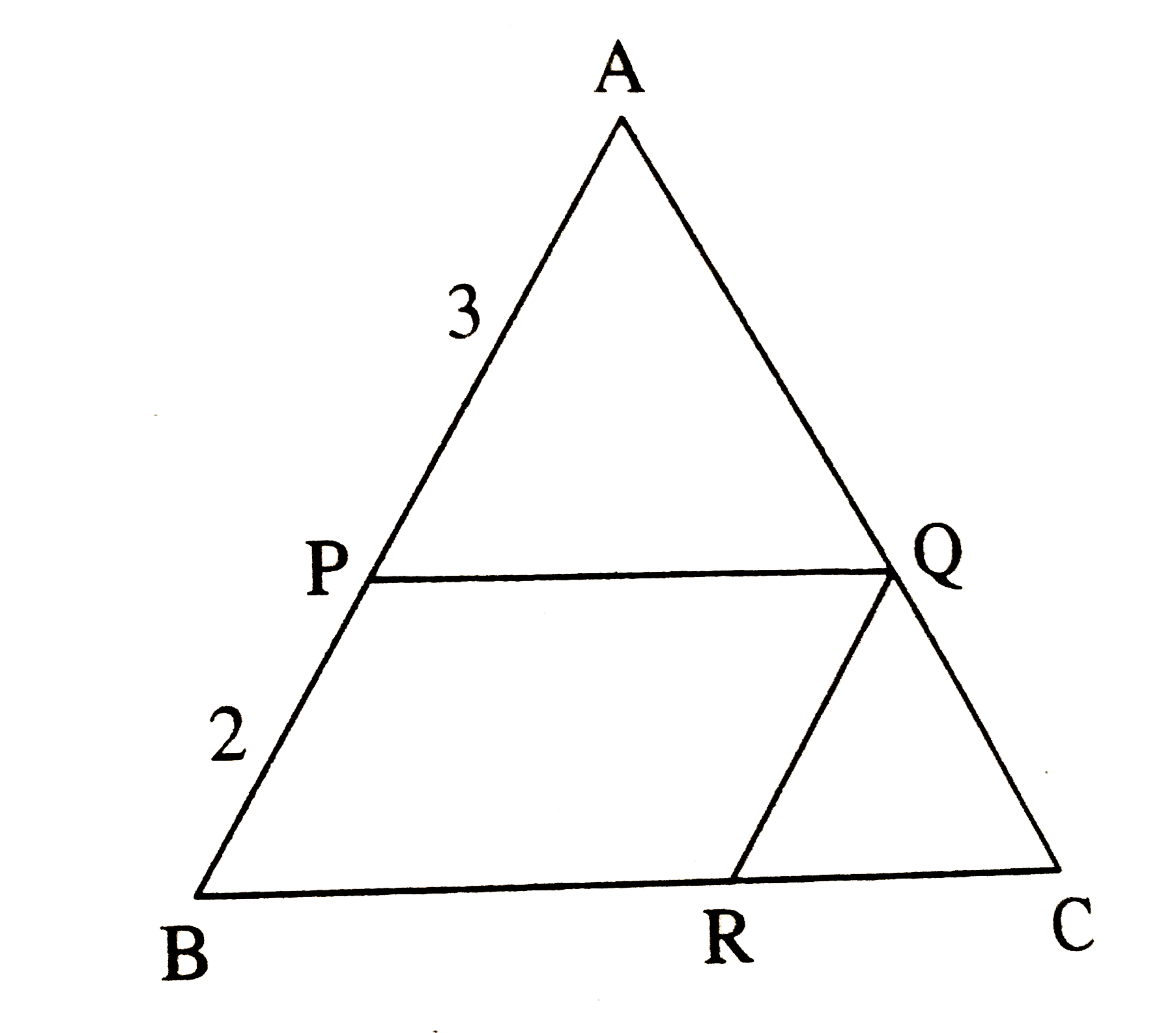
View SolutionIn the figure lien PQ∣∣ side BC,AP=2.4cm,PB=7.2cm,QC=5.4cm then find AQ.
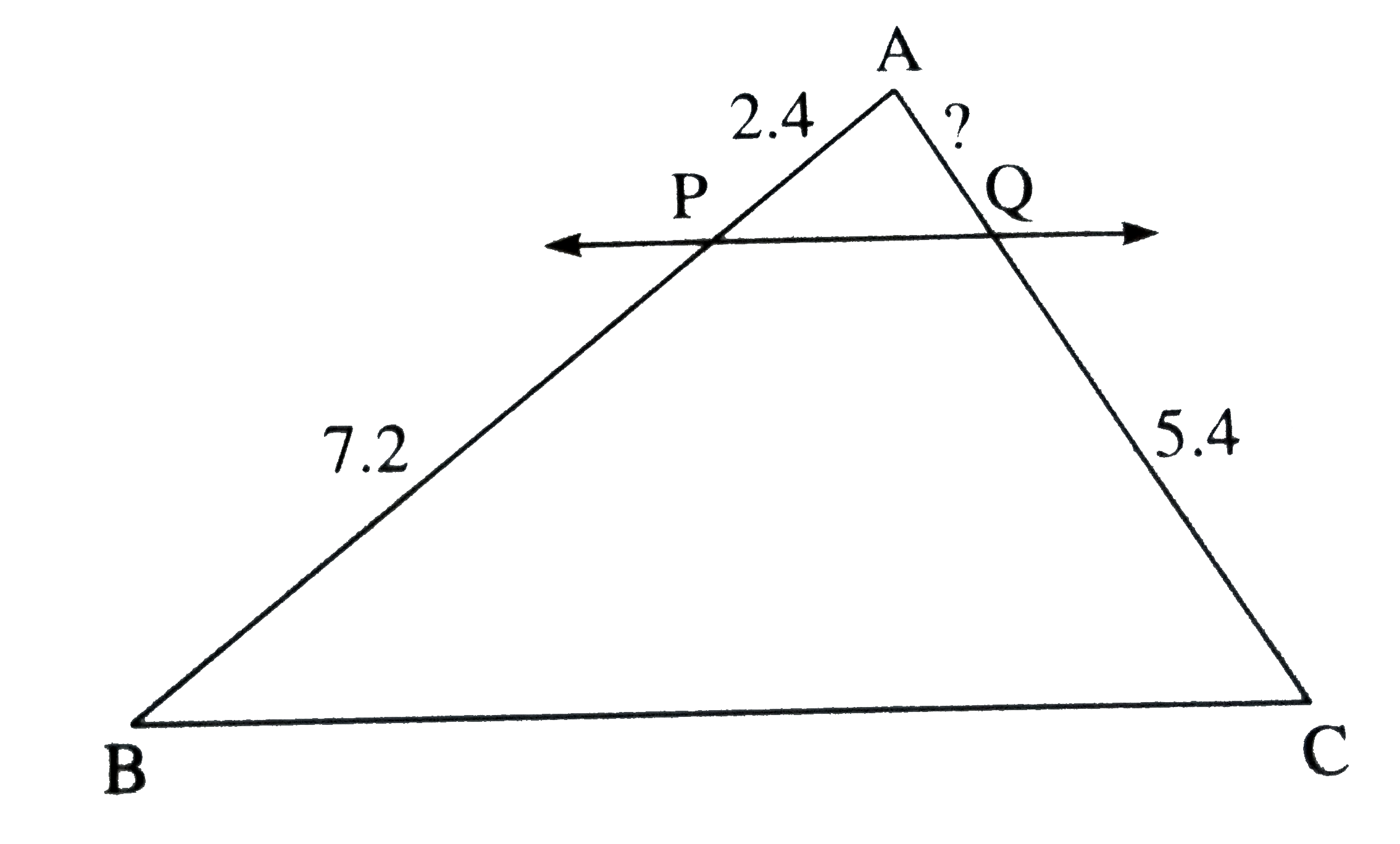
View SolutionA line parallel to the side BC of ΔABC intersects the sides AB and AC at the points P and Q respectively.
(a) If PB=AQ, AP=9 units, QC=4 units, then calculate the length of PB.
(b) The length of PB is twice of AP and the length of QC is 3 units more than the length of AQ, then calculate the length of AC.
(c) If AP=QC, the length of AB is 12 units and the length of AQ is 2 units , then calculate the length of CQ.
View SolutionThe order of the reaction
5 Br−(aq)+BrO−3(aq)+6 H+(aq)→3 Br2(aq)+7 H2O(l) is
View SolutionMeasures of same angles in the figure are given. Prove that APPB=AQQC.

View SolutionIn △ABC,AQ is the bisector of ∠A. AB=18,AC=12,AQ=6 If AP is the bisector of ∠BAQ If BC=16,find BP,PQ and QC
View Solutionunderset("(aq)")(MnO_(4)^(-)) + underset("(aq)")(Br^(-)) to underset("(aq)")(MnO_(2))+ underset("(aq)")(BrO_(3)^(-))
View Solutionयदि आकृति (1) और (i) में, PQ || BC हो, तो (i) में QC और (ii) में AQ ज्ञात कीजिए-
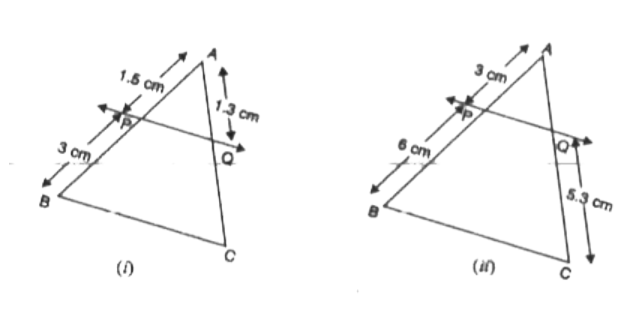
View Solution
